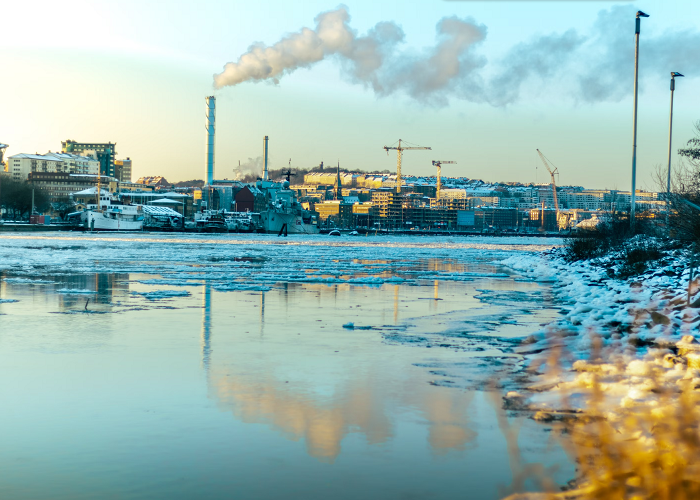Water is essential for life, yet its purity is increasingly threatened by the presence of volatile organic compounds (VOCs). These compounds, originating from both natural processes and human activities, pose a significant risk to water quality and human health.
From industrial discharge to agricultural runoff, VOCs infiltrate our water sources, contaminating rivers, lakes, and groundwater reservoirs. As we witness the alarming rise in VOC-related water pollution, understanding their sources, assessing their contamination levels, and implementing effective remediation strategies become paramount.
The United States Geological Survey (USGS) notes that the widespread usage of VOCs in agriculture, industry, and transportation has made them pervasive in our daily lives. VOCs were analyzed in over 3,500 water samples collected in the US between 1958-2001.
In this article, we will delve into the intricate web of VOCs in water by exploring the pathways through which they contaminate water resources. Toward the end, we will also discuss innovative strategies employed to restore and safeguard water quality for present and future generations.
Sources and Contamination of VOCs in Water
Volatile organic compounds (VOCs) in water originate from both natural and human activities. Natural sources include emissions from plants and geological sources like soil. Anthropogenic sources involve industries, agriculture, urban runoff, and improper waste disposal.
An article at LiveScience reported that VOCs that are produced by plants, animals, and microorganisms are specifically called Biogenic VOCs or BVOCs. Isoprene and Monoterpenes are the two most prominent BVOCs in our environment, both produced by plants.
TorHoerman Law notes that VOCs can directly enter water bodies through industrial effluents or runoff. In agriculture, VOCs from pesticides and fertilizers leach into groundwater. Urban runoff carries VOCs from vehicle emissions and construction activities. Improper waste disposal releases VOCs into water bodies through landfill leachate.
Contamination occurs when VOCs enter water bodies through various pathways:
- The discharge from industrial effluents and untreated wastewater from factories can directly introduce VOCs into water bodies.
- VOCs emitted into the atmosphere can undergo deposition onto water surfaces through rainfall or air-water exchange processes.
- VOCs present in soil or groundwater can leach into surface water or infiltrate into aquifers, especially in areas with contaminated soil or improper waste disposal practices.
- Rainwater runoff carries VOCs from impervious surfaces, agricultural fields, and urban areas into nearby streams, rivers, and lakes.
VOC water contamination is closely linked to a wide range of diseases, including several kinds of cancer. The Camp Lejeune water contamination between 1953-1987 is a prime example of that.
During that period, the water at Camp Lejeune – a military base camp in North Carolina – was contaminated, exposing its residences to harmful chemicals. It led to them facing the risk of a number of diseases, including birth defects and several types of cancer.
The lawsuit is currently progressing in the North Carolina Federal Court. If you are or know someone from North Carolina who has suffered the contamination, you can read more about the Camp Lejeune lawsuit update to stay informed on the lawsuit’s ongoing procession.
Factors Influencing VOC Transport and Behavior in Water
Factors influencing VOC transport and behavior in water determine how these compounds move and interact within aquatic environments. Here’s an explanation of these factors:
Solubility
The solubility of VOCs in water affects their ability to dissolve and spread. Compounds with higher solubility are more likely to remain in the aqueous phase and disperse evenly throughout the water column, while less soluble compounds may preferentially partition into air or sediment phases.
Vapor Pressure
Vapor pressure refers to the tendency of a substance to evaporate into the air. VOCs with higher vapor pressures are more likely to volatilize from water into the air, while those with lower vapor pressures tend to remain dissolved in the water phase.
Adsorption and Desorption
VOCs can adsorb onto suspended solids, sediment particles, or organic matter present in water. This process can influence their transport and fate, as adsorbed compounds may be transported along with particles or retained in sediments. Desorption, the release of adsorbed VOCs back into the water phase, can occur under certain conditions, affecting their mobility.
Hydrophobicity
The hydrophobicity or water-repellent nature of VOCs influences their affinity for water and other phases. Hydrophobic VOCs tend to adsorb onto organic matter or accumulate in fatty tissues of organisms, leading to bioaccumulation and biomagnification in aquatic food chains.
Environmental Conditions
Environmental factors such as temperature, pH, and salinity can influence VOC transport and behavior in water. Changes in these parameters can affect the solubility, volatilization, and partitioning of VOCs between different phases.
Understanding these factors is essential for predicting the fate and transport of VOCs in water bodies. Besides water, VOCs also have an increasingly negative impact on the air quality.
A recently published article from Phys.org revealed that the presence of VOCs could lead to an extremely high loading of Ozone. The research behind this observation was conducted in the Qinling mountain region of China, where Ozone contributes to the deterioration of air quality, leading to air pollution.
Remediation Strategies for VOC Water Contamination
Remediation strategies for volatile organic compounds (VOCs) in water work by employing various methods to reduce or eliminate the presence of these contaminants. These strategies include physical, chemical, and biological methods. Below, we’ll explore all these methods:
Air Stripping
In air stripping, contaminated water is exposed to air, allowing VOCs to evaporate into the air phase. This is facilitated by bubbling air through the water or spraying water into the air. VOCs are separated from the water and captured using air pollution control devices.
Activated Carbon Adsorption
Activated carbon has a porous structure with a large surface area, allowing it to adsorb VOC molecules from water. As water passes through a bed of activated carbon, VOCs adhere to the carbon surface, effectively removing them from the water.
Oxidation Processes
Oxidation techniques utilize chemical oxidants such as hydrogen peroxide (H2O2), ozone (O3), or advanced oxidation processes (AOPs) to break down VOC molecules into less harmful byproducts through chemical reactions. This can involve the generation of reactive oxygen species that react with VOCs to degrade them.
Bioremediation
Bioremediation employs naturally occurring microorganisms to degrade or metabolize VOCs into harmless compounds. Microorganisms may use VOCs as a carbon source for growth, breaking them down through metabolic pathways. Bioremediation can occur in situ (in the contaminated environment) or ex-situ (in controlled environments such as bioreactors).
Frequently Asked Questions (FAQs)
What is the function of VOCs in the environment?
VOCs facilitate communications between plants and animals. Some prime examples of that include protection from predation, attractants for pollinators, and even inter-plant interactions.
What are some common sources of VOCs in our house?
Household products like aerosol sprays, moth repellents, air fresheners, wood preservatives, cleaners, and disinfectants are some of the common sources of VOCs in your house.
Do VOCs cause global warming?
VOCs contribute to global warming indirectly by changing the concentration of ozone in the atmosphere, which is an important greenhouse gas.
In summary, volatile organic compounds (VOCs) present a complex challenge in our water systems, stemming from diverse natural and human-driven sources.
From industrial effluents to agricultural runoff, these contaminants threaten both aquatic ecosystems and human health. By prioritizing prevention, regulation, and technological advancement, we can forge a path toward cleaner, healthier waterways for generations to come.



